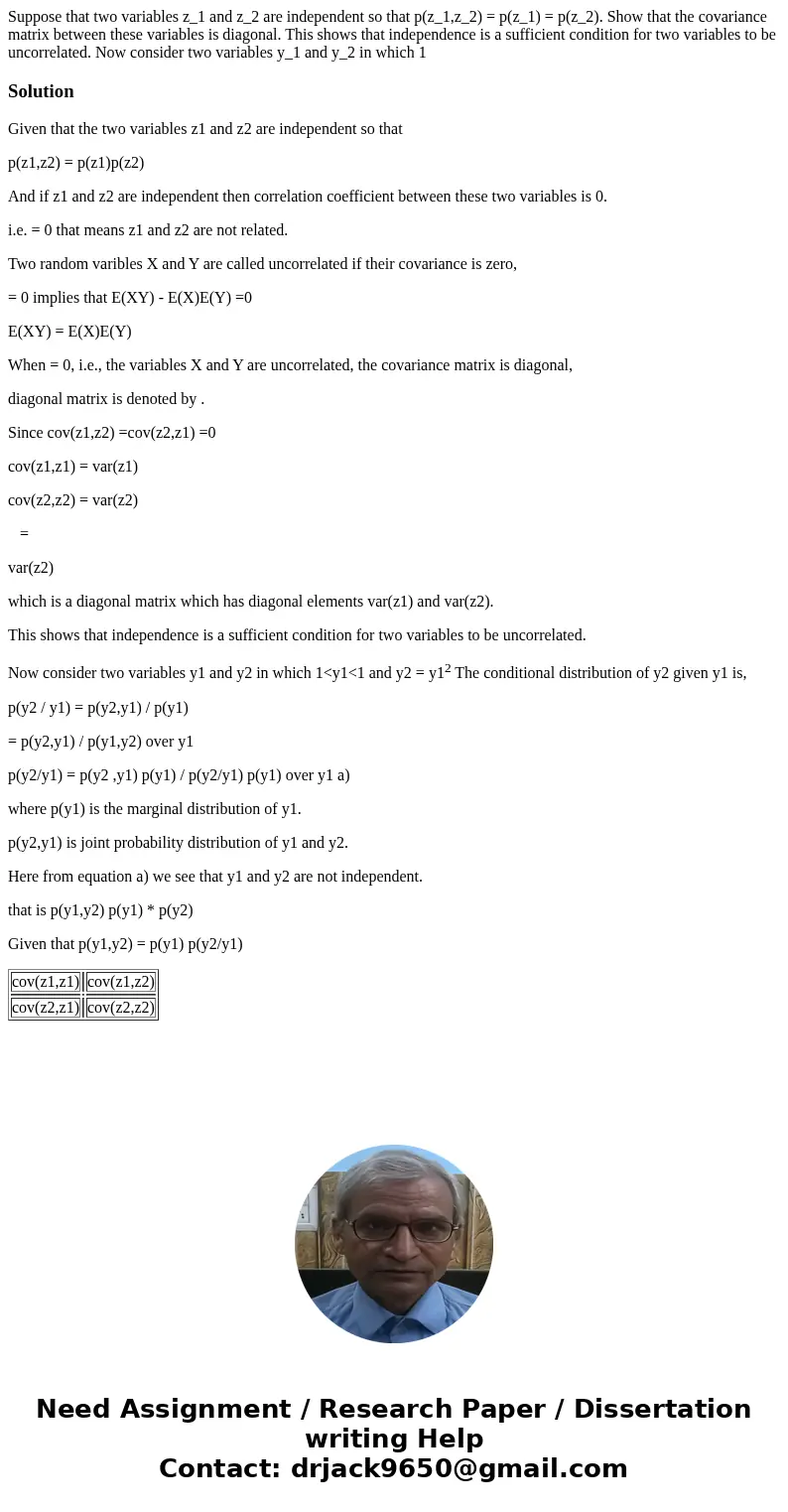Suppose that two variables z1 and z2 are independent so that
Solution
Given that the two variables z1 and z2 are independent so that
p(z1,z2) = p(z1)p(z2)
And if z1 and z2 are independent then correlation coefficient between these two variables is 0.
i.e. = 0 that means z1 and z2 are not related.
Two random varibles X and Y are called uncorrelated if their covariance is zero,
= 0 implies that E(XY) - E(X)E(Y) =0
E(XY) = E(X)E(Y)
When = 0, i.e., the variables X and Y are uncorrelated, the covariance matrix is diagonal,
diagonal matrix is denoted by .
Since cov(z1,z2) =cov(z2,z1) =0
cov(z1,z1) = var(z1)
cov(z2,z2) = var(z2)
=
var(z2)
which is a diagonal matrix which has diagonal elements var(z1) and var(z2).
This shows that independence is a sufficient condition for two variables to be uncorrelated.
Now consider two variables y1 and y2 in which 1<y1<1 and y2 = y12 The conditional distribution of y2 given y1 is,
p(y2 / y1) = p(y2,y1) / p(y1)
= p(y2,y1) / p(y1,y2) over y1
p(y2/y1) = p(y2 ,y1) p(y1) / p(y2/y1) p(y1) over y1 a)
where p(y1) is the marginal distribution of y1.
p(y2,y1) is joint probability distribution of y1 and y2.
Here from equation a) we see that y1 and y2 are not independent.
that is p(y1,y2) p(y1) * p(y2)
Given that p(y1,y2) = p(y1) p(y2/y1)
| cov(z1,z1) | cov(z1,z2) | |
| cov(z2,z1) | cov(z2,z2) |

 Homework Sourse
Homework Sourse